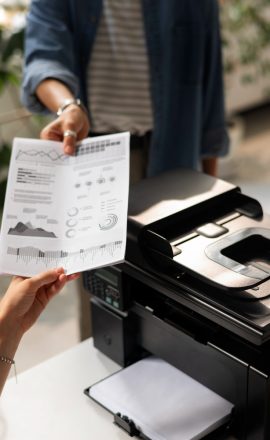Print Marketing: A Current And Constantly Renewed Strategy
In current times, it may sound old-fashioned to rely on print formats for marketing. Social media, after all, has broken down communication barriers like never before. However, this does not mean that print is an obsolete or less valuable medium.
The key is knowing when and how to use it to promote the growth of our company. Would you like to know some of the most useful ways to get the most out of print in marketing? Here we present them to you!

In the publishing industry, for example, the end of physical books and the absolute predominance of e-books were predicted. However, this did not happen.
The role of printing in the new digital context
In the publishing industry, for example, the end of physical books and the absolute predominance of e-books were predicted. However, this did not happen.
This social behaviour has a lot to do with the performance of the rest of the printed formats: people need and like tangible media that we can feel and store.
And it is precisely the physical nature of printed resources that represents their greatest advantage over other trends.
QR Code Printing
Brochure printing
During the pandemic, these types of interactions were totally or partially restricted, and as a result, the flow of casual information was conditioned.

For these types of situations, the brochures were very useful. Its format allows valuable and timely information to be presented in a user-friendly manner. This is without requiring a prolonged approach between the interacting people.


Printing magazines or business directories
People chose to consume content that they found safer on social networks and other digital platforms.
Consequently, many publications looked for a way to move their content to these types of platforms, adopting a hybrid model. Many others replicated this while favouring the virtual promotion of subscriptions to content in physical format.
Printing of posters and signs
One of the types of printing that were most favoured by the arrival of the pandemic was posters and signs. The need to keep our distance led to the dissemination of information with a few meters of distance in between.
This trend prompted smarter and more creative use of poster designs. In a matter of seconds, the design had to attract the attention of a prospect, in addition to encouraging them to consume said brand.
